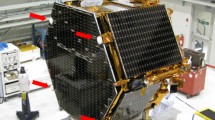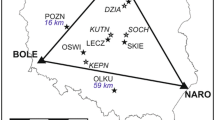Abstract.
During the past decade, geodetic measurements have been greatly improved through the use of space geodesy techniques based on the global positioning system (GPS). The GPS allows for precise surveys, where centimetre-level accuracies may be obtained through differential carrier phase-based positioning algorithms. GPS positioning techniques often rely on the availability of dual-frequency data for formation of ionosphere-free and widelane observables (in the case of ambiguity resolution). While GPS positioning results generally provide adequate accuracies for several precise positioning applications, users may experience degraded positioning accuracies over the next few years. Of particular concern are ionospheric phenomena called magnetic storms, which are characterized by an increased spatial decorrelation of ionosphere range delays and scintillation effects at low and high latitudes. During such events, degradations in differential positioning accuracies are observed, and availability of the L2 observations may be limited through loss of signal lock. The magnitude of such effects is estimated during a global magnetic storm event, and a performance comparison of two survey-grade receivers is conducted. This storm is representative of the activity at solar maximum and several years beyond.
Similar content being viewed by others
Author information
Authors and Affiliations
Additional information
Received: 26 May 2000 / Accepted: 4 April 2001
Rights and permissions
About this article
Cite this article
Skone, S. The impact of magnetic storms on GPS receiver performance. Journal of Geodesy 75, 457–468 (2001). https://doi.org/10.1007/s001900100198
Issue Date:
DOI: https://doi.org/10.1007/s001900100198




